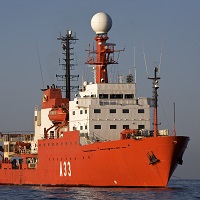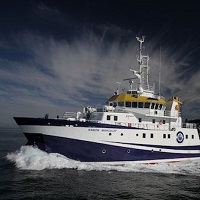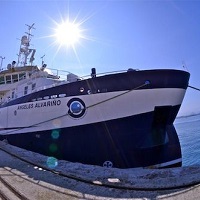Contact for the resource
Las Palmas University. Sciences of the Sea Faculty
13 record(s)
Type of resources
Categories
Topics
INSPIRE themes
Keywords
Contact for the resource
Provided by
Years
Formats
Status
-

Ocean eddies and atmospheric deposition
-

Whirlpools / mesoscale meanders in the central Strait Brandsfield: identification and physical-biological coupling
-

The African connection in the waters of the Canary Current
-

Ocean eddies and atmospheric deposition
-

Incident flux on the continental shelf between the Strait of Gibraltar and Cape Ghir
-

Water masses distribution and effect of the upwelling system in the local ecosystem of the Canary Archipielago
-

The goals of this survey are framed within the educational activity of the Faculty of Marine Sciences ULPGC to give the possibility of a complete oceanographic study (Physical , Chemical , Biological and Geological Survey ) in the south of Gran Canaria students of Degree, Bachelor and Master , the convergence zone between the area and the trail of the island and the presence of permanent rotation south of it. Thus this survey will contribute to a comprehensive training for students in oceanographic study of an oceanic region may Determine the structure of water bodies, the effects of convergence and divergence to the passage of the Canary Current across the channels between islands, mass transport , and nutrients. Determine the distribution of chemical species , including oxygen and carbon dioxide system and quantify the transport of CO2 in the atmosphere-ocean study area , the effect of micro and mesoscale phenomena in their distribution. To characterize the effect of the wake , turns and other mesoscale structures in the distribution of species of phytoplankton and zooplankton.
-

The goals of this survey are framed within the educational activity of the Faculty of Marine Sciences ULPGC to give the possibility of a complete oceanographic study (Physical , Chemical , Biological and Geological Survey ) in the south and north-east of Gran Canaria students of Degree, Bachelor and Master , the convergence zone between the area and the trail of the island and the presence of permanent rotation south of it. Thus this survey will contribute to a comprehensive training for students in oceanographic study of an oceanic region may Determine the structure of water bodies, the effects of convergence and divergence to the passage of the Canary Current across the channels between islands, mass transport , and nutrients. Determine the distribution of chemical species , including oxygen and carbon dioxide system and quantify the transport of CO2 in the atmosphere-ocean study area , the effect of micro and mesoscale phenomena in their distribution. To characterize the effect of the wake , turns and other mesoscale structures in the distribution of species of phytoplankton and zooplankton.
-

The goals of this survey are framed within the educational activity of the Faculty of Marine Sciences ULPGC to give the possibility of a complete oceanographic study (Physical , Chemical , Biological and Geological Survey ) in the south and north-east of Gran Canaria students of Degree, Bachelor and Master , the convergence zone between the area and the trail of the island and the presence of permanent rotation south of it. Thus this survey will contribute to a comprehensive training for students in oceanographic study of an oceanic region may Determine the structure of water bodies, the effects of convergence and divergence to the passage of the Canary Current across the channels between islands, mass transport , and nutrients. Determine the distribution of chemical species , including oxygen and carbon dioxide system and quantify the transport of CO2 in the atmosphere-ocean study area , the effect of micro and mesoscale phenomena in their distribution. To characterize the effect of the wake , turns and other mesoscale structures in the distribution of species of phytoplankton and zooplankton.
-

The test cruise of the Bathypelagic project (Bathytest) was carried out to the south of Gran Canaria and consisted in two oceanographic stations over 300 and 1000 meters depth in order to test the video camara system installed on the rosette and developed by the University of Las Palmas (Canary Islands). Different tests were performed in order to capture images at different wavelengths to find the best image quality and avoid scapement of organisms as much as possible. Day and night casts were performed. Zooplankton nets deployments (WP-2) were made also during day and nightime.
 Catálogo de datos del IEO
Catálogo de datos del IEO